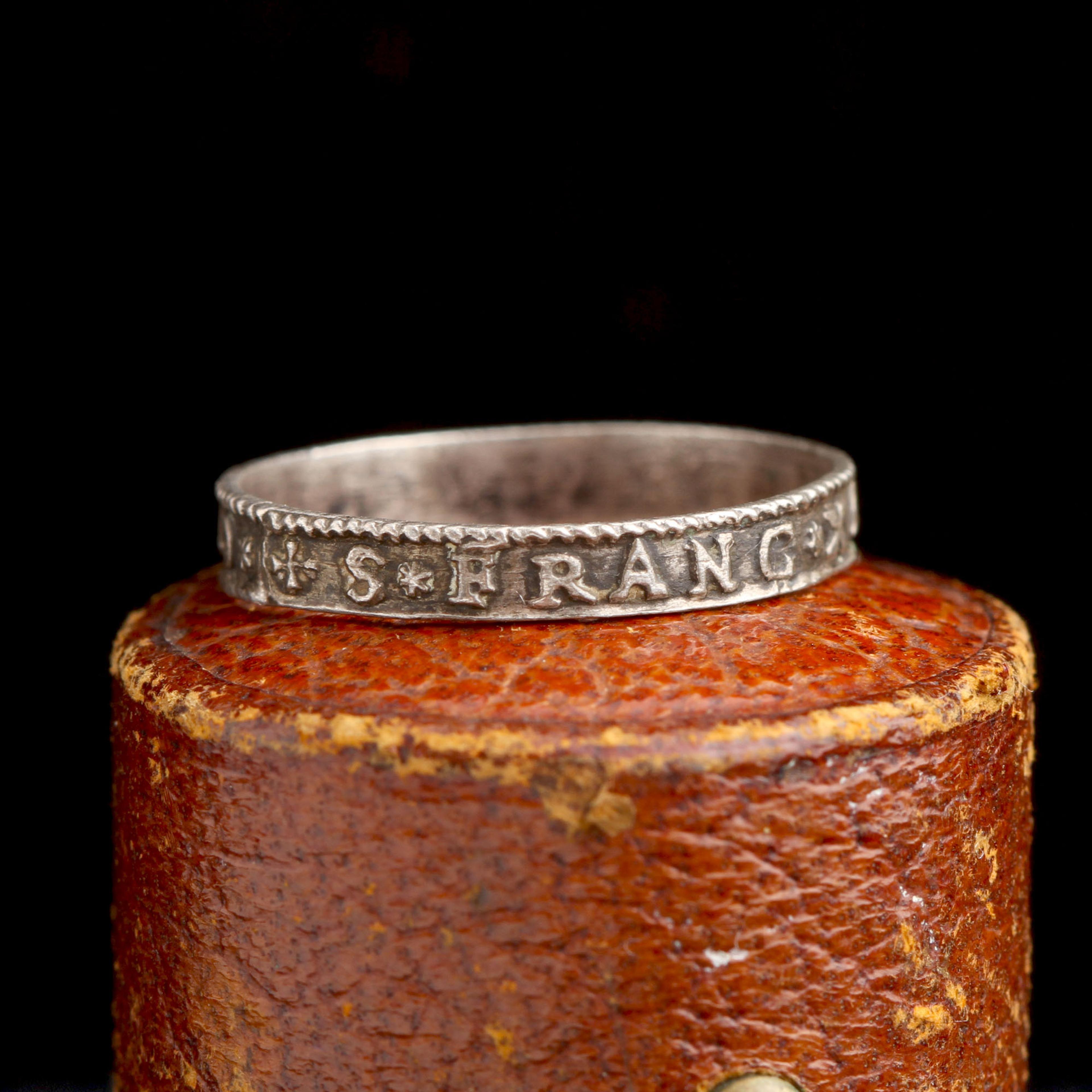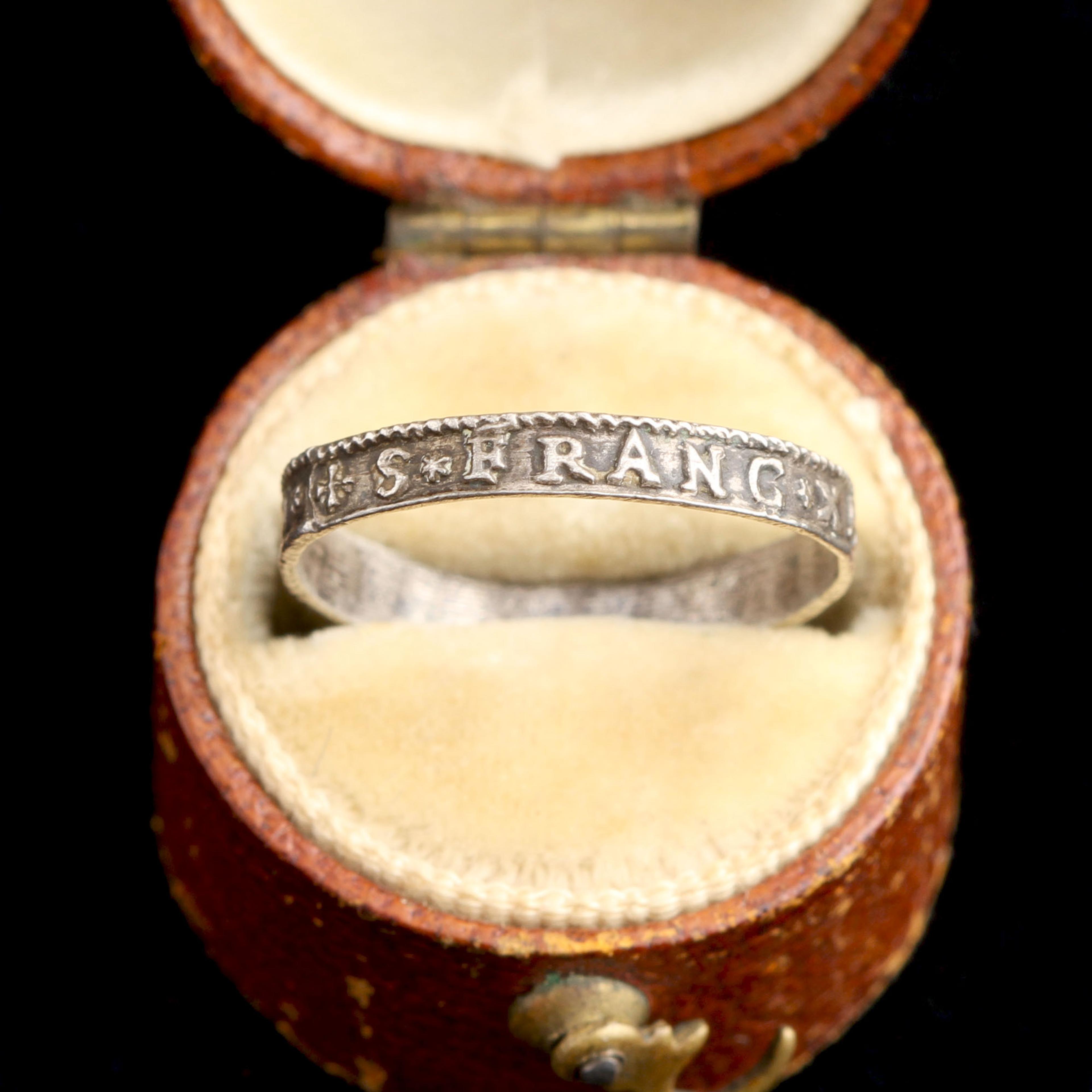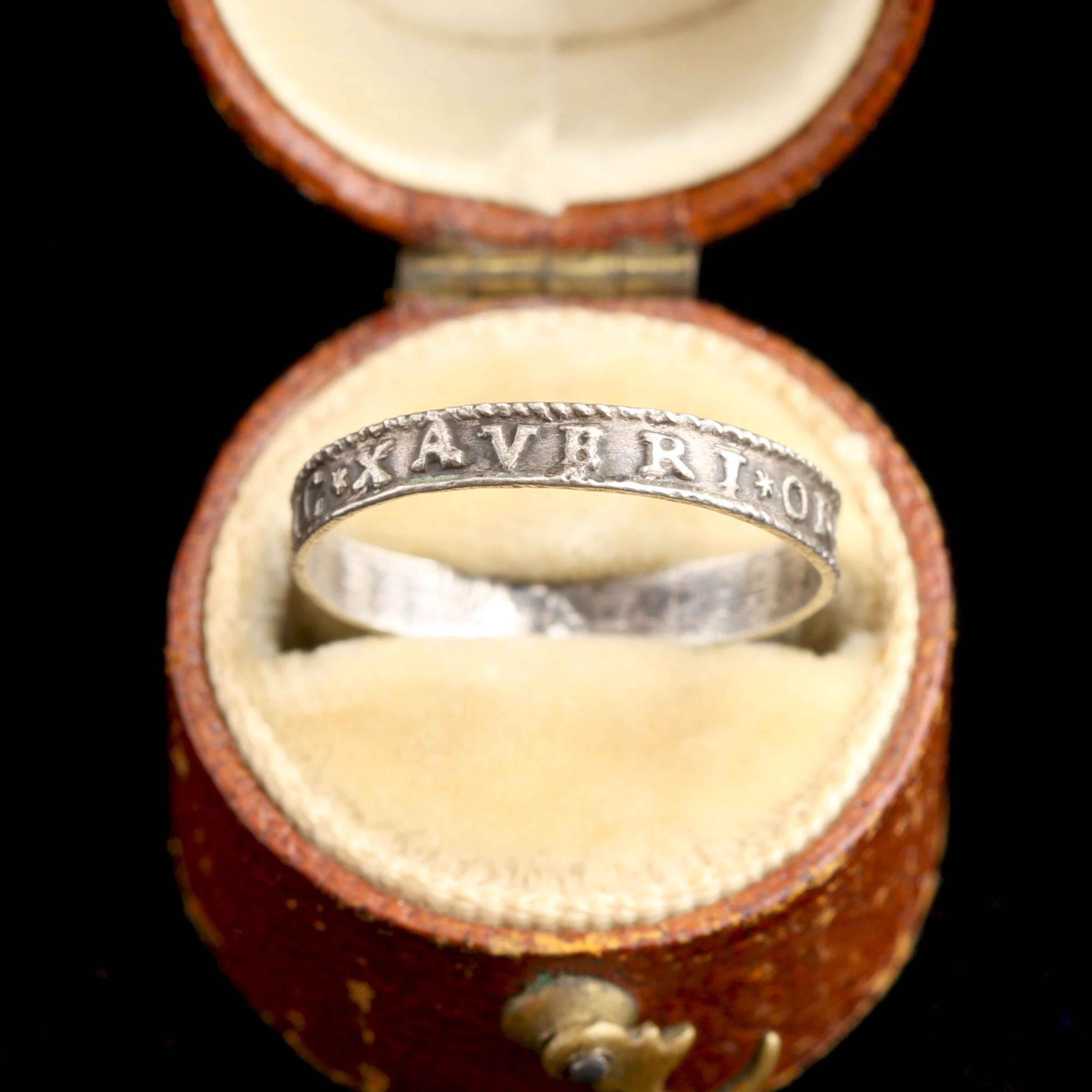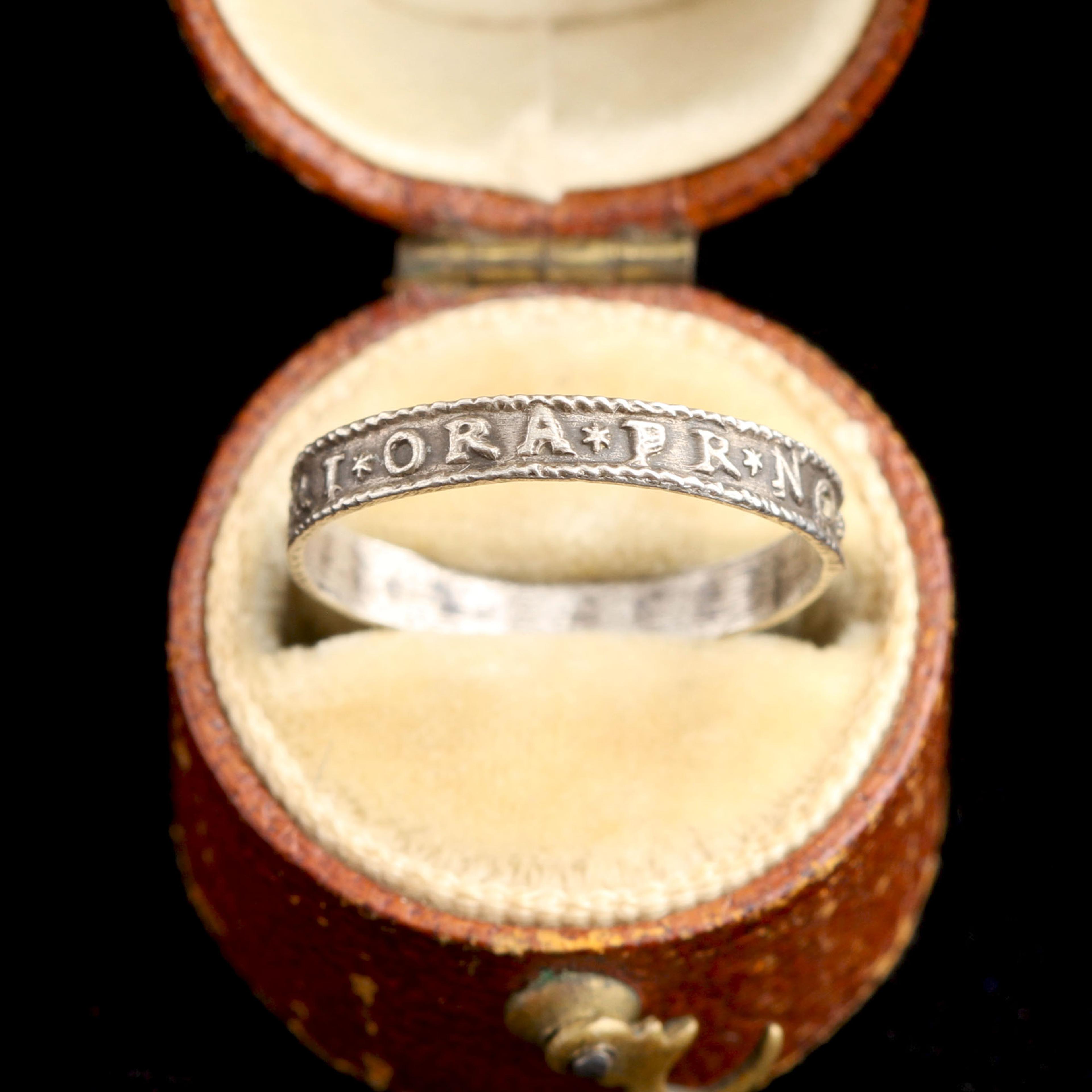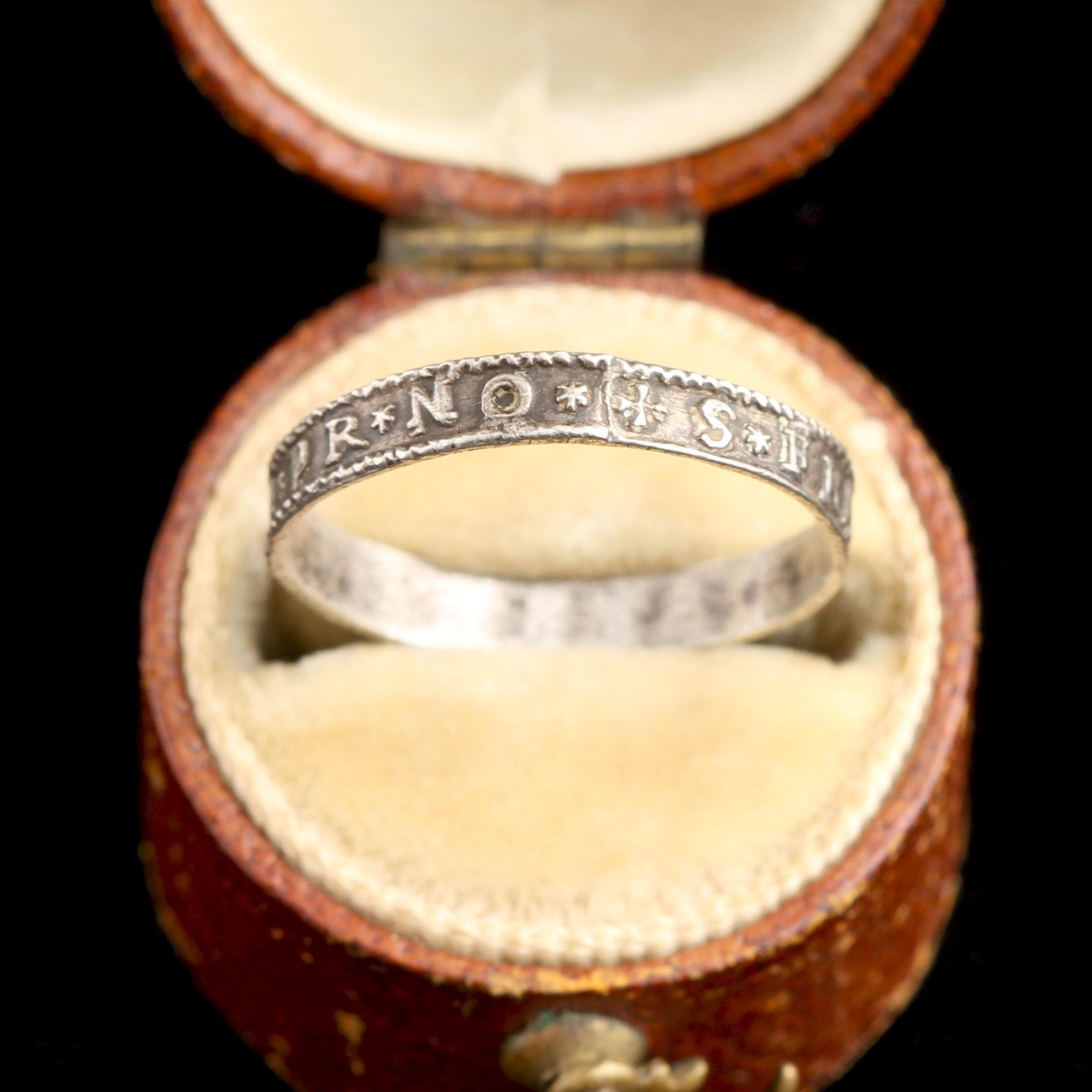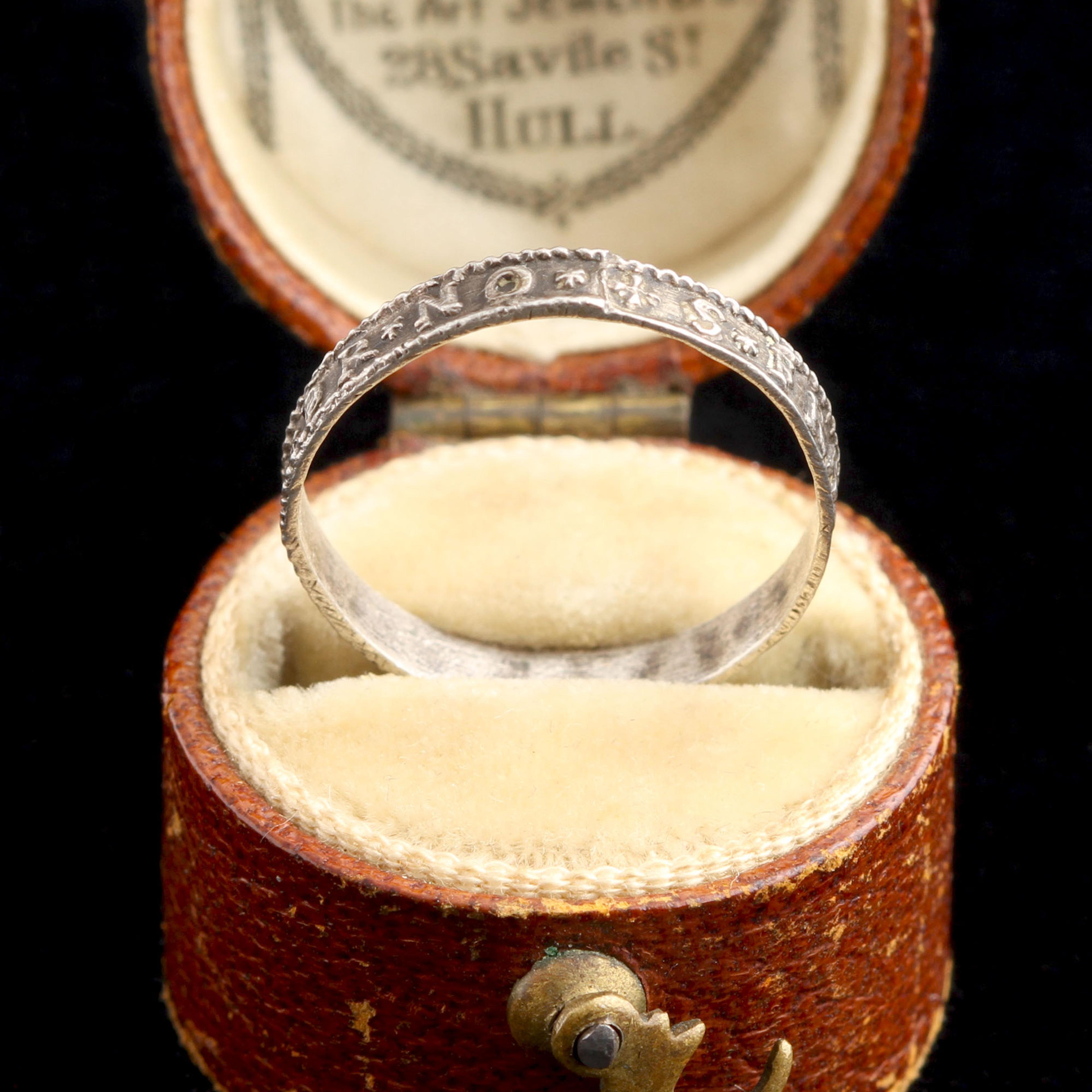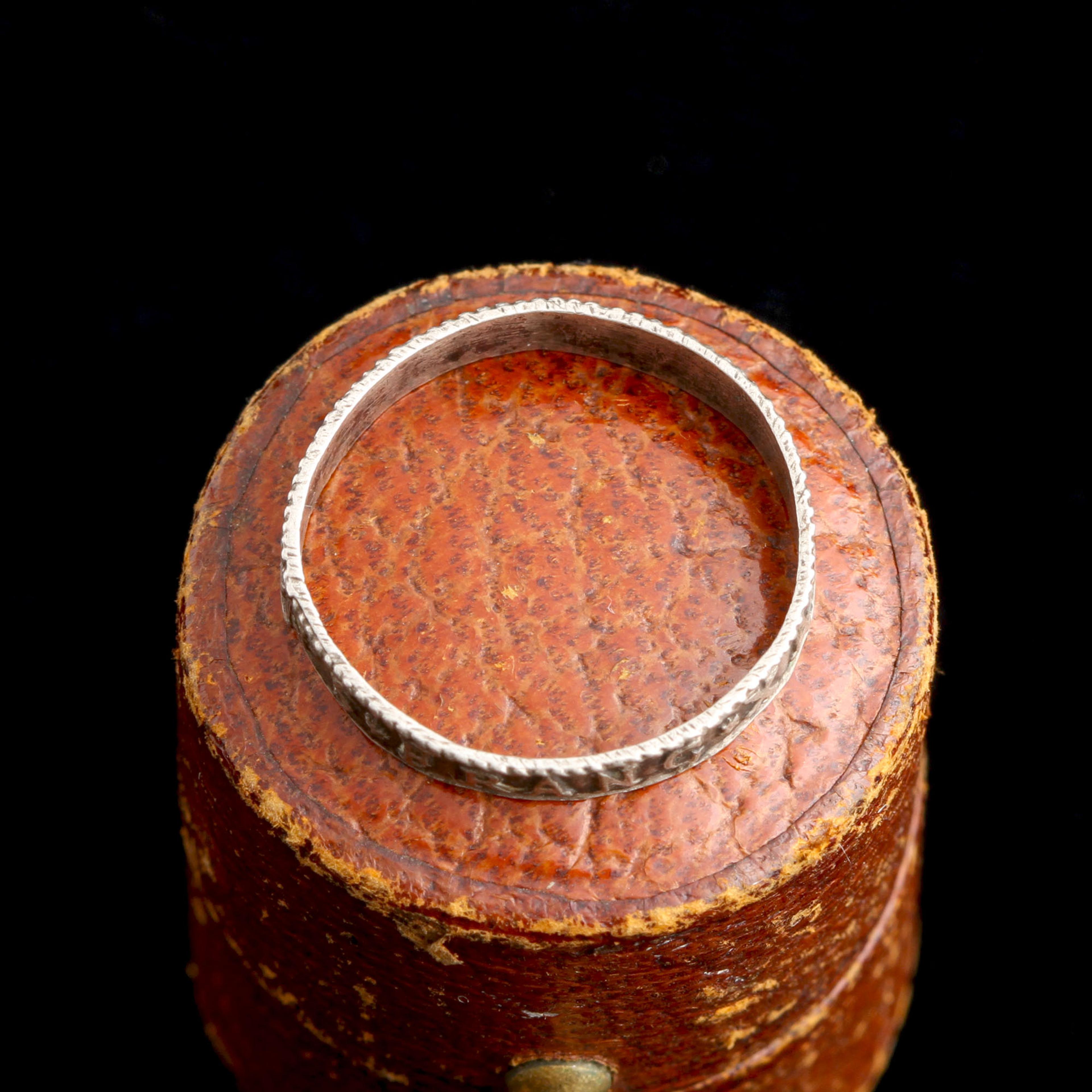THIS 17th CENTURY silver pilgrim’s ring honors St. Francis Xavier, one of the most revered Catholic missionaries of the Counter-Reformation. Known for his missionary work in India and Japan, he was celebrated in his time for spreading Christianity to distant lands. While his efforts were praised in the 17th century, modern perspectives recognize the problematic nature of the colonial-era mindset that sought to replace indigenous beliefs, often dismissing the cultural identities of those he converted.
PILGRIMS SEEKING divine protection or spiritual blessings would undertake significant journeys to venerate St. Francis Xavier. This might be a trip to see his remarkably well-preserved body in Goa, India—an extraordinary feat in the 1680s. Rings like this served as tokens of devotion and proof of their pilgrimage.
thedetails
- Materials
silver
- Age
c. 1680
- Condition
Very good - surface wear commensurate with age and use
- Size
7, cannot be resized
Need more photos?
Send us an email to request photos of this piece on a model.
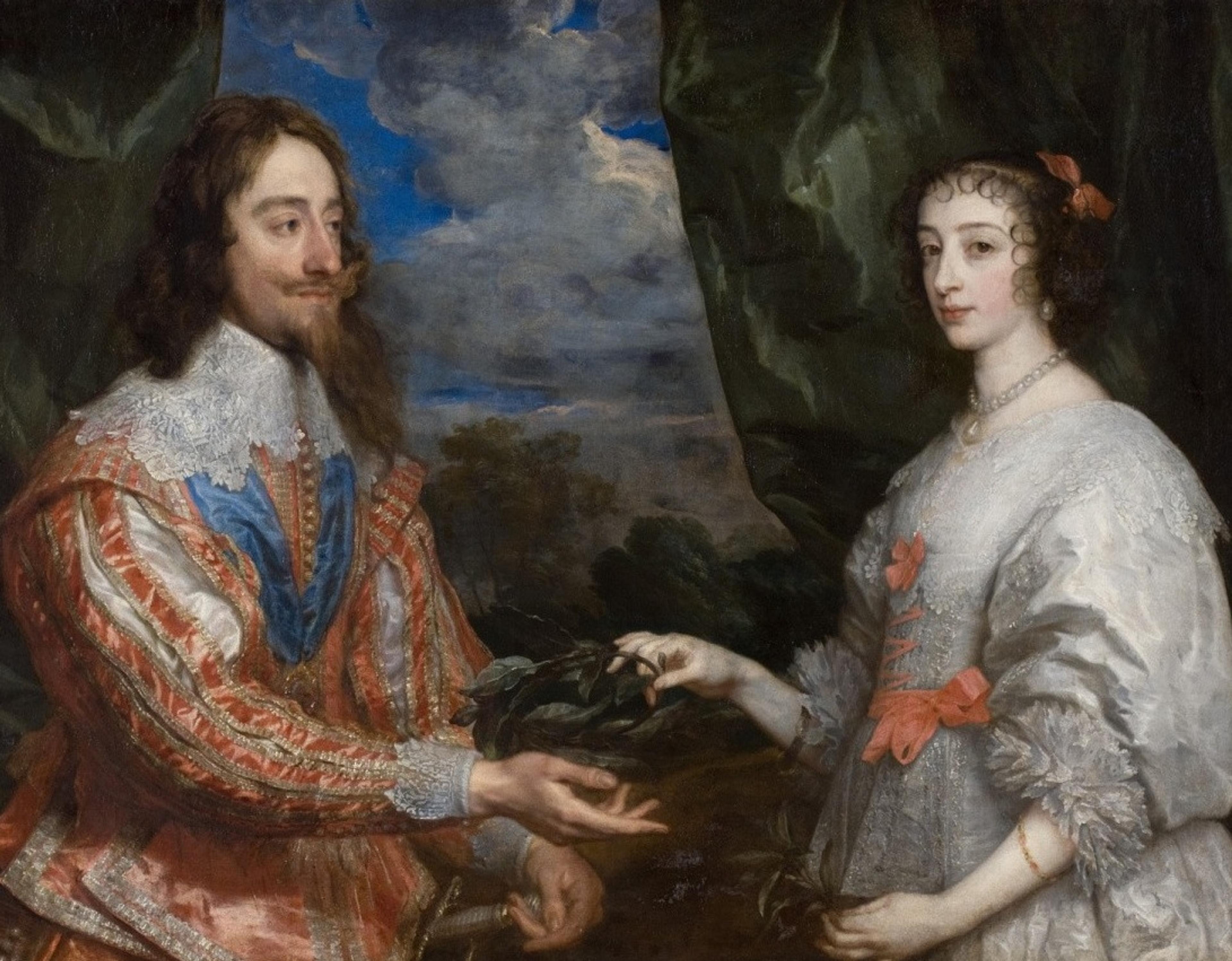
Aboutthe
StuartEra
1603 — 1714
A new era dawned when Queen Elizabeth — the last Tudor monarch — died without an heir. The monarchy was temporarily displaced by the Commonwealth of England from 1649 to 1660 by Oliver Cromwell, but was restored — aka "The Restoration" — as Charles II was invited to take the throne. His father, Charles I, had been beheaded in 1649, and most of the jewelry we see from this period was at least stylistically related to this controversial political event. During this time, discoveries and innovations transformed England and Scotland, which were conjoined after a long period of feuding. Coffee became a new trendy beverage, with 600 coffeehouses in London all catering to a different type of clientele. This imported novelty beverage was possible because of the UK's rapidly expanding worldwide trade network. Not yet interested in acquiring territories, the island nation focused instead on making a fortune exporting wool and importing goods like slaves, sugar, and tea. Everyone (except the enslaved people, of course) benefited from the new merchant class that arose, and in the process the Royal Navy became the most powerful in the world. The look of London changed, too — after the Great Fire of 1666, Christopher Wren was hired to rebuild the city's damaged churches, with his greatest accomplishment being St. Paul's Cathedral.
please note:Terms of Sale
Antiques can be returned unworn and in original condition within 10 days of delivery for an exchange or refund minus the cost of shipping. Once a piece has been altered, including ring re-sizing, it is FINAL SALE.
